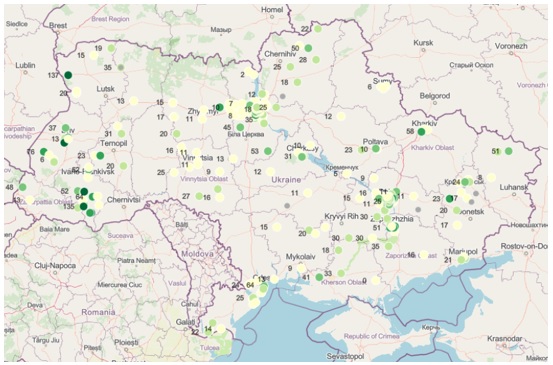In recent years, the analysis of environmental data has become increasingly important as global awareness of environmental issues has grown. The need to understand complex ecological systems and the impact of human activities on the environment has led to the development of sophisticated intellectual methods for analyzing environmental data. These methods encompass a range of techniques and technologies designed to interpret large datasets, uncover patterns, and provide insights that can inform environmental policy and conservation efforts. This article explores the various intellectual methods used in environmental data analysis and their significance in advancing our understanding of the natural world.
Before delving into the analysis, it is crucial to consider the sources of environmental data. Data can be obtained from satellite imagery, ground-based sensors, climate models, wildlife surveys, and a multitude of other monitoring systems. The advent of the Internet of Things (IoT) has also enabled the collection of real-time data from a network of connected devices [1]. These diverse data streams provide a wealth of information that must be effectively managed and analyzed to be useful.
Statistical methods are foundational in environmental data analysis. They allow researchers to identify trends, establish correlations, and make predictions. Techniques such as regression analysis, time series analysis, and multivariate statistics are commonly used to analyze variables such as temperature, precipitation patterns, and pollution levels [2]. By applying these techniques, scientists can detect changes in environmental conditions and assess the probability of future events, such as extreme weather occurrences.
Geographic Information Systems (GIS) and remote sensing are powerful tools for visualizing and analyzing spatial data. These technologies enable the mapping of environmental phenomena and the examination of changes over time [3]. For instance, deforestation, urban sprawl, or the spread of invasive species can be monitored through satellite imagery, and GIS can be used to model the potential impact of these changes on biodiversity and ecosystem services.
Fig -1: Visualize the AQI for Ukraine
Machine learning (ML) and artificial intelligence (AI) have revolutionized the analysis of environmental data by enabling the processing of vast datasets beyond human capability. These technologies can identify complex patterns and relationships within the data, often uncovering insights that would be missed by traditional methods. For example, neural networks can be trained to predict air quality or to detect illegal logging activities by analyzing soundscapes [4].
The term "big data" refers to datasets that are too large or complex for traditional data-processing applications. In environmental science, big data analytics involves the use of advanced computational methods to process and analyze large volumes of data from various sources. Techniques such as data mining, predictive analytics, and high-performance computing are used to gain a deeper understanding of environmental systems and to inform decision-making processes [5].
While intellectual methods provide powerful means to analyze environmental data, they also present challenges. Data quality, privacy concerns, and the potential for biased algorithms are issues that must be addressed. Ethical considerations regarding the use of AI and the implications of data-driven decisions on communities and ecosystems are also of paramount importance.
The intellectual analysis of environmental data is a dynamic field that continues to evolve with technological advancements. The integration of statistical methods, geospatial technologies, machine learning, and big data analytics has enabled a more nuanced understanding of environmental issues. By harnessing these intellectual methods, researchers, policymakers, and the public can make more informed decisions to protect and preserve our natural environment for future generations.
References:
1. Zanella, A., et al. (2014). Internet of things for smart cities. IEEE Internet of Things Journal, 1(1), 22-32.
2. James, G., Witten, D., Hastie, T., & Tibshirani, R. (2013). An Introduction to Statistical Learning. Springer.
3. Longley, P. A., Goodchild, M. F., Maguire, D. J., & Rhind, D. W. (2015). Geographic Information Science and Systems. John Wiley & Sons.
4. Liang, S., et al. (2016). Deep learning: the frontier for distributed attack detection in fog-to-things computing. IEEE Communications Magazine, 55(2), 92-99.
5. Mayer-Schönberger, V., & Cukier, K. (2013). Big Data: A Revolution That Will Transform How We Live, Work, and Think. Houghton Mifflin Harcourt.
________________________
Supervisor: Monastyrskyi L.S., Doctor of Physical and Mathematical Sciences, Professor, Ivan Franko National University of Lviv, Ukraine
|








